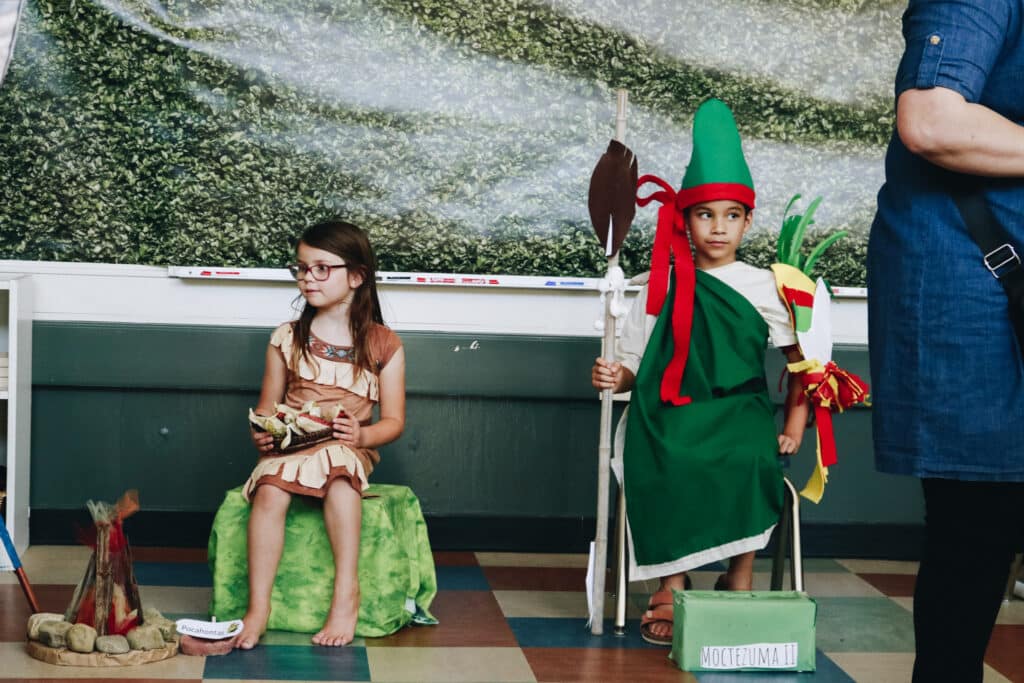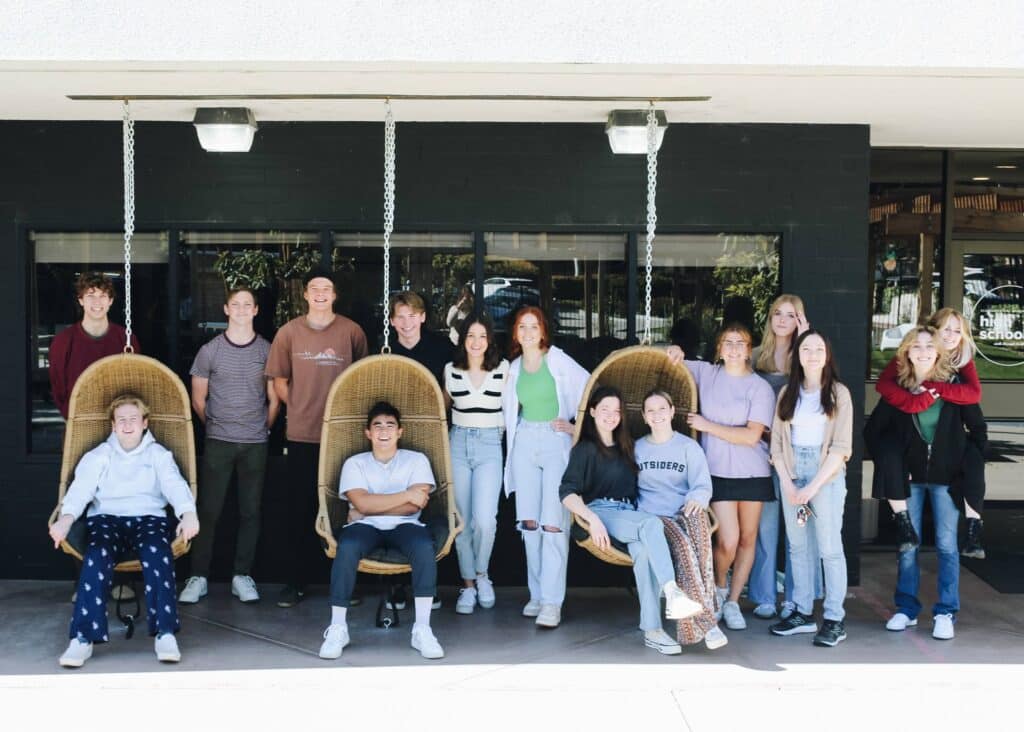
Classical Character
Mrs. Burns’ Book Review Blog
Last year Jenna Burns brought us Pedagogic Ponderings, a blog review of books on education. This year she brings us Classical Character, a book review blog examining the interplay of classical education and moral instruction. She is seeking answers to this question: How can we as parents, educators, and a school community shape moral children of uncompromising integrity? In her blog she gives us a snapshot of books on this subject with the intention of providing her readers with a manageable dose of practical inspiration. We hope her blog helps you better understand classical education, character building, and our school.
After teaching History and Language Arts at SLOCA UMS for five years, Jenna remains involved in SLOCA and is currently the WASC Accreditation Coordinator.
NEW: Our school store is now carrying the books reviewed in this Classical Charater series. Come and see!
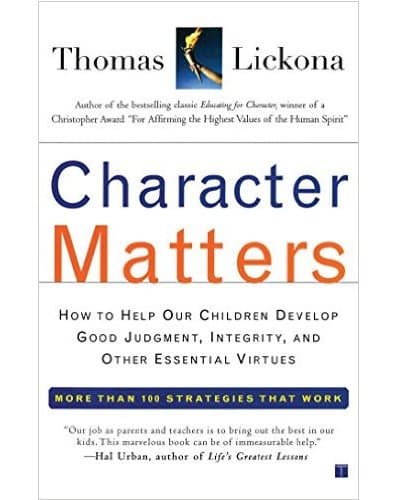 This month I’m reviewing Character Matters: How to Help Our Children Develop Good Judgment, Integrity, and Other Essential Virtues by Thomas Lickona. I chose this book because its claim – “100 strategies that work,” intrigued me but also made me skeptical. “Really?” I wondered, “one hundred practical methods that truly help children develop virtue? ONE HUNDRED?” My verdict: Oh, yes, indeedy. This book is one practical idea, after inspiring story, after practical idea. So, read this month’s blog to learn about Mrs. Burns’ great athletic accomplishment, an unnerving encounter with a doppelganger, and great ways to help develop character in young people.
This month I’m reviewing Character Matters: How to Help Our Children Develop Good Judgment, Integrity, and Other Essential Virtues by Thomas Lickona. I chose this book because its claim – “100 strategies that work,” intrigued me but also made me skeptical. “Really?” I wondered, “one hundred practical methods that truly help children develop virtue? ONE HUNDRED?” My verdict: Oh, yes, indeedy. This book is one practical idea, after inspiring story, after practical idea. So, read this month’s blog to learn about Mrs. Burns’ great athletic accomplishment, an unnerving encounter with a doppelganger, and great ways to help develop character in young people.
In college, I walked right into a big character development opportunity. A friend and I were hanging out in Barnes and Nobles downtown, when we came across a book entitled something like, 100 Things to do before You Die. I was in a crazy mood I guess, because I said, “I’m going to open to a random page in this book, and whatever it is – WHATEVER – we have to do it together.” We agreed. I closed my eyes, parted the pages, looked down and saw three big, bold, unapologetic words: “Run a marathon.” Wait. What?  I thought I was signing up for watching a sunrise or eat caviar or something. But no. Out of all the amazing bucket-list possibilities, I had to pick the one that would leave me sweating and gasping for 26.2 miles! That’s terrible luck. You may be thinking, “Why not call the whole thing off?” Well, I was drawn to this incredible challenge. Could I really run a marathon? So for the better part of a year I trained, and I actually stuck with it, even when it got really hard. Like this one 17-mile run that took us across the Cal Poly fields which had been freshly turned with manure. No one desperately sucking in air should have to smell that. Through this whole experience I learned perseverance, my character grew, and it paid off when I crossed the finish line of the LA marathon.
I thought I was signing up for watching a sunrise or eat caviar or something. But no. Out of all the amazing bucket-list possibilities, I had to pick the one that would leave me sweating and gasping for 26.2 miles! That’s terrible luck. You may be thinking, “Why not call the whole thing off?” Well, I was drawn to this incredible challenge. Could I really run a marathon? So for the better part of a year I trained, and I actually stuck with it, even when it got really hard. Like this one 17-mile run that took us across the Cal Poly fields which had been freshly turned with manure. No one desperately sucking in air should have to smell that. Through this whole experience I learned perseverance, my character grew, and it paid off when I crossed the finish line of the LA marathon.
Thomas Lickona’s book, Character Matters, reminds me of that fateful book in Barnes and Nobles. Like it, Character Matters has 100 worthwhile activities, though its activities are for the purpose of developing character in young people. As I was reading, I found myself thinking, “This is a great idea. SLOCA has to try it.” Pages later I’d repeat myself: “We just have to do this!” I guess, as I was reading, I imagined I was the benevolent dictator of SLOCA, but anyways. My copy of Character Matters is littered with “Try this!” and “Great idea!”. The downside to Lickona’s approach is it’s a little overwhelming. Where do I start? Yet, I’m left feeling that if you were to open his book randomly to any one page, and say to yourself, “Whatever idea is on this page, I will try it,” and then you actually did, you would see great results. I know what you’re thinking, but don’t worry. You won’t be stuck running a marathon. It’s not one of the 100 strategies. You might, however, find yourself greeting each of your students with eye contact and a warm handshake as they enter your classroom in the morning. Imagine – what difference might that one little change make?
Character Matters is a great book and I highly recommend it, especially to educators. The book is divided into five parts, three of which are geared towards character education in schools. Part two, “Create Families of Character,” however, is a helpful section for parents. It is filled with ideas on how to teach good judgment and manners, and how to talk to your kids about sex (gulp). It’s such a useful book, in fact, that as dictator I would require you to read it. But in case you don’t, here are my top three take-aways:
 1. Connectedness produces character. A child who feels a sense of connection with a safe, moral adult is more likely to demonstrate positive character traits. Lickona reviews a study investigating teens at risk: “The study identified two ‘protective factors’ that tended to keep teens from becoming involved in these risk behaviors. Most important was family connectedness, a feeling of closeness to parents. Next in importance was school connectedness, a feeling of closeness to people at school,” (120). In other words, as adults we have the potential to greatly influence the lives of the young people in our sphere just by forming positive connections with them.
1. Connectedness produces character. A child who feels a sense of connection with a safe, moral adult is more likely to demonstrate positive character traits. Lickona reviews a study investigating teens at risk: “The study identified two ‘protective factors’ that tended to keep teens from becoming involved in these risk behaviors. Most important was family connectedness, a feeling of closeness to parents. Next in importance was school connectedness, a feeling of closeness to people at school,” (120). In other words, as adults we have the potential to greatly influence the lives of the young people in our sphere just by forming positive connections with them.
My first teaching job was in a community known for poverty and violence. Towards the end of the year a boy was transferred into my class because he was causing so much trouble in his other class. I remember being nervous. I didn’t want a trouble maker coming into my room and throwing off the balance I had worked so hard to create. To my surprise, he was quiet and polite. Relieved that he wasn’t acting up, I let him be. I didn’t really try to make a connection. One year later he was killed in a drive-by shooting. He was only thirteen. I remember just staring at his old desk, a few rows back and to the left. His death changed things for me in that I started seeing my year with my students as a limited-time opportunity to make a positive connection. I didn’t want to abdicate that opportunity for the sake of convenience again.
I have had various degrees of success with following through with that conviction. But it quickly became clear that making connections with students was the most powerful thing I could do as a teacher. It reminds me of the saying: people don’t care what you know until they know that you care.
If you’re wondering where to start with shaping your child’s character, start here with connection. Spend some quality time together, share in a hobby, and see where it takes you.
 2. Practice produces character. Virtues, like being patient or grateful, are not as innate as we may think. They are actually learned traits. It takes practice and effort to be a good person. Lickona makes the argument that adults should provide children with learning opportunities, scenarios aimed at character development. The ultimate ideal is helping kids take responsibility for building their own characters. Some of Lickona’s suggestions include guiding kids through goal-setting, keeping a good deeds journal, reciting a self-created moral pledge. Here’s another idea in the form of a vignette:
2. Practice produces character. Virtues, like being patient or grateful, are not as innate as we may think. They are actually learned traits. It takes practice and effort to be a good person. Lickona makes the argument that adults should provide children with learning opportunities, scenarios aimed at character development. The ultimate ideal is helping kids take responsibility for building their own characters. Some of Lickona’s suggestions include guiding kids through goal-setting, keeping a good deeds journal, reciting a self-created moral pledge. Here’s another idea in the form of a vignette:
A kindergarten teacher used fables and fairytales to teach her students how to make good decisions. “She’d capture the moral of each story in a simple saying: Actions speak louder than words. Honesty is the best policy. If you want to have a friend, be a friend. She had her class repeat these sayings at different times of the day . . . soon they knew them by heart,” (201). One of her students had a father who was in prison for murder. After visiting him over Christmas break, the boy told his teacher: “‘You know, Mrs. Brown, on the way home in the car, I kept thinking about my dad. I just know if he had your class, he wouldn’t be where he is now. He would have made better decisions,” (201). The author remarks, “Though only five and a half, Cody had already gotten hold of a very large idea: We shape our character by our decisions, and our character shapes our lives,” (201).
3. Model character development: “Model that process [of character development], so that young people have adults in their lives who are visibly committed to high ideals and engaged in actualizing them more fully,” (22). As Lickona rightly observes, “Good character will not be absorbed from our current moral environment,” (35). We have to be the moral example for the young people in our lives.
At a playdate the other day I spilled coffee on my shirt. “Oh crap,” I grumbled as I futilely tried to wipe away the blooming stain. My friend’s three year old son instantly, and I mean instantly, adopted this as his new favorite saying. He began running around that playground saying “Oh crap!” to everything. I was deeply embarrassed. “I’m so sorry,” I told my friend. I hadn’t even realized he was listening. But our kids seem to always be listening, watching, absorbing. What are they seeing? A powerful first step in being intentional to develop our children’s characters is to be intentional – and transparent – in developing our own.
Now that we’ve looked at some of the big ideas in the book, let’s see what it all has to do with classical education and life at SLOCA. Though it isn’t a focus of his book, Lickona makes a point from the onset to make this clear: character education has its roots in classical education.
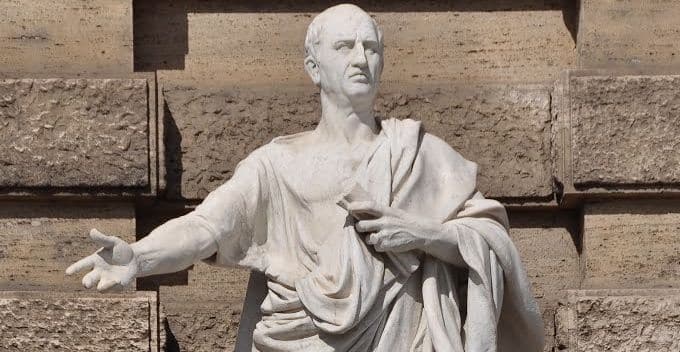 To the question, why does character matter? The Greek philosopher Heraclitus answered: “‘Character is destiny,’” (qtd. in Lickona 4). “Aristotle taught ages ago: A fulfilling life is a life of virtue. You can’t be happy unless you’re good,” (7). Cicero proclaimed, “‘Within the character of a citizen lies the welfare of the nation,’” (qtd. in Lickona 4).
To the question, why does character matter? The Greek philosopher Heraclitus answered: “‘Character is destiny,’” (qtd. in Lickona 4). “Aristotle taught ages ago: A fulfilling life is a life of virtue. You can’t be happy unless you’re good,” (7). Cicero proclaimed, “‘Within the character of a citizen lies the welfare of the nation,’” (qtd. in Lickona 4).
To the question, what virtues are most important for strong character? “The ancient Greeks named four,” (8) Lickona explains. Those are: wisdom, justice, fortitude, and self-control. The ancient Greeks, “considered wisdom to be the master virtue, the one that directs all others . . . Wisdom tells us how to put the other virtues into practice,” (8). We at SLOCA agree with that. You can see it in our mission statement: “a community that forges character, fosters wisdom, and nurtures a lifelong passion for learning.” These are not three separate, stand-alone missions. Character, wisdom, and learning are so interwoven and interdependent, you cannot do one well without the others. As Lickona puts it, there is a, “false dichotomy between character education and academics . . . To be a school of character, a community of virtue, is to be equally committed to two great goals: intellectual excellence and moral excellence,” (122).
Or, in other words: “Character education, rightly understood, aims to develop the whole person,” (143). This sentence brought me right back to my interview at SLOCA, some six years ago. “At SLOCA, we believe in educating the whole child,” Susie Theule told me, then asked a question about what I thought about that and how might I help in realizing that goal. I remember thinking that I had never heard anything like that – not in teacher training, and not in my former school. The typical educational approach just doesn’t expand beyond literacy and numeracy all that much. I’m sure I stammered out a pathetic answer because the question really caught me off guard. In fact, I actually remember a picture forming in my mind of myself bent over teaching parts of speech to a child’s knee. This was my idea of educating a whole person, knees and all.
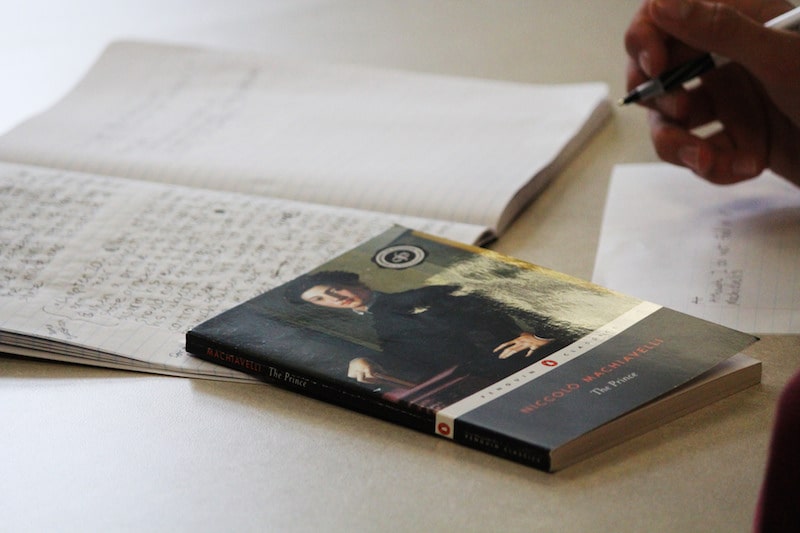 Now, however, I know what Susie meant because I’ve seen it first hand, in action, all the time at SLOCA. It is the commitment Lickona describes to nurturing our students’ hearts, minds, imaginations, and intellects. Indeed, many of Lickona’s 100 ideas are things we are already doing at SLOCA, like his suggestion to use examples in history and literature to teach character. I smiled knowingly at the suggestion to use Joan of Arc and Horatius at the bridge to teach courage. Been there. Done that.
Now, however, I know what Susie meant because I’ve seen it first hand, in action, all the time at SLOCA. It is the commitment Lickona describes to nurturing our students’ hearts, minds, imaginations, and intellects. Indeed, many of Lickona’s 100 ideas are things we are already doing at SLOCA, like his suggestion to use examples in history and literature to teach character. I smiled knowingly at the suggestion to use Joan of Arc and Horatius at the bridge to teach courage. Been there. Done that.
I really love the title of this book – Character Matters. I have often reflected that what has mattered most in my classroom hasn’t been the particulars of reading and writing. What has mattered most has been something much deeper, like this:
I once had this amazing student. She was a very talented writer and was on the whole a very original person. This particular week was my last week teaching as Ms. Orme. I would return to the classroom two weeks from then as Mrs. Burns. This student did not like the idea that I was getting married and taking on a new name – why, I was never quite sure. As I was teaching, I walked by her desk and noticed a little hand sewn cloth doll in a wedding dress and veil. Hmmm, I thought, that’s a bit odd. It looks like a voodoo doll. A little while later I had the chance to look closer, and, sure enough, a sleek, little silver pin was driven through the doll’s heart.
What followed was a conversation I never would have imagined having: “I will not allow you to have a voodoo doll of me – especially not out on your desk with a pin stuck in the heart.” It was a strange start to a special connection. I will never forget the page long entry she wrote in my yearbook in June. I left one just as long for her. “Are you done yet?” She asked me multiple times, as I wrote, her yearbook propped against my knees as I leaned against the wall in the shade. The confiscated voodoo doll sat on my desk (pin removed) as long as I taught, a reminder that connections can happen in unexpected places, and when formed they bless me much more than my students.
Character matters. Thank you Thomas Lickona for reminding us of this fact and giving us lots of ideas on how to make character a priority in our lives and the lives of the young people we know.
Next up: The Virtues Project by Linda Popov. I chose this book because of this incredible description: “The Virtues Project was honored by the United Nations during the International Year of the Family as a model global program for all cultures, and was featured on the Oprah Show as a method for teaching children to ‘do the right thing.’”
Lickona, Thomas. Character Matters: How to Help Our Children Develop Good Judgment, Integrity, and Other Essential Virtues. New York: Touchstone, 2004. Print.




